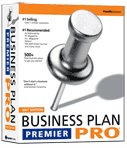Book Excerpt - Body Mind Mastery
05 Dec
Posted by Travis Wright as Book Reviews, Consciousness, General, Inspiration, Meditation & Relaxation
From “Body Mind Mastery: Creating Success in Sport and Life” by Dan Millman

For fifteen years I trained with great energy in the sport of gymnastics. Even though I worked hard, progress often seemed slow or random, so I set out to study the process of learning. Beginning with standard psychological theory, I read studies of motivation, visualization, hypnosis, conditioning, and attitude training. My understanding grew, but only in bits and pieces. Reading Eastern philosophy, including the traditions of Taoist and Zen martial arts, expanded my knowledge, but I still lacked the understanding I sought.
Eventually, I turned to my own intuitive experience for the answers. I understood that infants learn at a remarkable pace compared to adults. I watched my little daughter Holly at play, to see if I could discover what qualities she possessed that most adults lacked.
One Sunday morning as I watched her play with our cat on the kitchen floor, my eyes darted from my daughter to the cat and back again, and a vision began to crystallize; an intuitive concept was forming in my mind about the development of talent — not just physical talent but emotional and mental talent as well.
I noticed that my young daughter’s approach to play was as relaxed and mindless as the cat’s, and I realized that the essence of talent is not so much a presence of certain qualities but rather an absence of the mental, physical, and emotional obstructions most adults experience.
After that discovery I found myself taking long walks alone, observing the forces of wind and water, trees and animals — their relationship to the earth. At first, I noticed only the obvious — that plants tend to grow toward the sun, that objects fall toward the earth, that trees bend in the wind, that rivers flow downhill.
After many such walks, nature removed her veil, and my vision cleared. I suddenly understood how trees bending in the wind embodied the principle of nonresistance. Visualizing how gentle running water can cut through solid rock, I grasped the law of accommodation. Seeing how all living things thrived in moderate cycles, I was able to understand the principle of balance. Observing the regular passing of the seasons, each coming in its own time, taught me the natural order of life.
I came to understand that socialization had alienated me (and most adults) from the natural order, characterized by free, spontaneous expression; my young daughter, however, knew no separation from things as they really are.
Still, such insights seemed more poetical than practical, until, in a single moment, the final piece fell into place. I was taking a hot shower, enjoying the soothing spray, when my busy mind suddenly became quiet and I entered a reverie. The realization stunned me: The laws of nature apply equally to the mind and the emotions.
This may not seem like a big deal to you, but I dropped the soap. Grasping how nature’s laws apply equally to the human psyche, itself inseparable from the body, made all the difference for me. The principles or processes of training were no longer merely physical. They became psychophysical. My perceptions even made a subtle shift: where once I viewed the world as a material realm, I now began to see a world of subtle forces and flowing energy, thus reaffirming our unbreakable connection to the laws of nature.
After fifteen years of gymnastics, my real training had finally begun. All that remained was to put this understanding to use. As I did, the fruits of training began to spill over into daily life. Training became a way of life, not just a means to an end. And the game of athletics became a vehicle of body mind mastery — training for the game of life.
In describing the river of life, or the delicate, ephemeral existence of the butterfly, or the sway of trees in the wind, the Chinese sages were painting pictures, drawing metaphors that pointed to the natural laws, the source of all human wisdom. Master teachers have each pointed to the same truth: that personal growth requires us to integrate the wisdom of life experience with the laws of nature.
Pursuing success in sport and life, I sought to align myself with the following lessons and laws:
Principle 1: Nonresistance
There are four ways to approach the forces of life:
• Surrender to them fatalistically. Rocks, because they are inanimate, have little choice but to surrender passively to the natural laws.
• Ignore them and, in ignorance, experience accidents, or create unnecessary struggle by swimming against the natural currents of life.
• Resist them and create turmoil. If we resist what is — the natural flow of life — we waste energy and fight ourselves.
• Use them and blend with nature. Like birds that ride the wind, fish that swim with the current, or bamboo that bends to absorb the weight of fallen snow, you can make use of natural forces. This is the real meaning of nonresistance. We can express the law of nonresistance in many ways:
• Don’t push the river.
• Let it be.
• Go with the flow.
• When life gives you lemons, make lemonade.
• Turn problems into opportunities and stumbling blocks into stepping-stones.
On days of slow physical progress, you can cultivate patience and trust in the natural process of growth. Nonresistance transcends passive acceptance and actively rides the currents and cycles, making use of whatever circumstances arise.
True nonresistance requires and develops sensitivity and wisdom. For the master, outer accomplishments are significant only as indicators of one’s alignment with natural law. Master golfers, for example, make intuitive use of the wind, of the direction the grass grows, of the moisture in the air and the curves of the land. They use gravity by letting the weight of the club head guide the swing in a relaxed rhythm. Master gymnasts learn to blend with the forces and circumstances in their environment. Masters of tennis learn to use the texture of the court to their advantage.
In daily life, those of us who resist change inhibit growth. Bob Dylan reminded us that those who aren’t busy being born are busy dying.
What a caterpillar calls the end of the world the master calls a butterfly. — Richard Bach
A martial arts principle teaches, “If pushed, pull; if pulled, push.” You can use your opponents’ movements to your advantage through nonresistance. Apply softness in the face of hardness — absorbing, neutralizing, and redirecting force. Body mind masters reject the adversarial mindset; they cease perceiving and resisting “enemies.” Rather, they view opponents as teachers or sparring partners who challenge them to bring out their best.
BLENDING
The Martial Arts Principle of No-Collision
Test 1. Stand squarely in front of a partner. Tense your body. Have the partner push you with one hand as you resist. How does that feel? What happens? You are likely to lose your balance or control as your partner pushes you backward.
The next time he or she pushes, take a smooth step back; just let your body flow backward at the same speed as your partner’s push. Give no resistance at all. What does this feel like? Do you feel the cooperation and harmony you have created? Centered and in control, you allow your partner to go where he or she wants to go.
Test 2. Stand with your right leg and right arm extended toward your partner; root both your feet lightly to the floor. Breathe slowly in your lower abdomen; relax. Cultivate a feeling of peace and goodwill. As you maintain this spirit, have your partner come toward you rapidly from a distance of about ten feet, with the intent to grab your right arm, which is extended toward him or her at hip level.
Just as your partner is about to grab your hand, whirl around and behind your partner by taking a smooth, quick step slightly to the side and beyond your partner as he or she lunges past, grabbing for the arm that’s no longer there. If you do this smoothly, facing your partner as you whirl around, you’ll maintain equilibrium and control as your partner totters on the edge of balance.
Test 3. This Aikido approach can also be applied to potential verbal confrontations. On such occasions, instead of engaging in verbal tussling — trying to prove a point, win an argument, or overcome someone with reason — just sidestep the struggle. Simply listen, really listen, to your opponents’ points; acknowledge the value of what they are saying. Then ask gently if there isn’t some validity to your view also.
In this way, you can learn to blend and apply nonresistance not only to physical opponents but to all of life’s little problems. Remember that you create the struggle in your life; you create the collisions. And you can dissolve conflict through nonresistance.
Nonresistance: Psychophysical Application
In judo, he who thinks is immediately thrown. Victory is assured to those who are physically and mental nonresistant. — Robert Linssen
Stress happens when the mind resists what is. Most of us tend to either push or resist the river of our lives, to fight circumstance rather than make use of things as they are. Resistance creates turbulence, which you feel as physical, mental, and emotional tension. Tension is a subtle pain, which — like any pain — signals that something is amiss. When we are out of natural balance, we create tension; by listening to our body, we can take responsibility for releasing it.
Athletes commonly resist the natural processes by trying. The word “try” itself implies weakness in the face of challenge. The moment you try, you are already tense; trying, therefore, is a primary cause of error. In more natural actions, you don’t try. You simply walk to the refrigerator, write a letter, or water the flowers; you don’t have to try, yet you perform these tasks easily and naturally. But when faced with something you consider an imposing challenge — when self-doubt arises — you begin to try. And when competitors feel pressure and begin to try, they often fall apart.
When archers shoot for enjoyment, they have all their skill; when they shoot for a brass buckle, they get nervous; when they shoot for a prize of gold, they begin to see two targets. — Chuang Tzu
To illustrate the effect of trying too hard, imagine walking across a four-inch-wide plank of wood suspended a few inches off the ground. No problem, right? Now raise the plank ten feet over a pond filled with alligators. Suddenly you begin trying harder. You feel tense. You have the same plank but a different mental state.
Life is a play of polarities. Whenever you try to accomplish something, you often experience — and create — internal forces in direct opposition to your goal, just like those who try to lose weight but end up gorging. You can measure this opposition in your own physiology: if you try to hold your arm straight, you’ll tend to tense your extensor muscles (triceps) but also your flexor muscles (biceps). You end up fighting yourself and wasting energy. If you try to stretch you may feel your muscles tensing in resistance, just as golfers who try to wallop the ball often end up topping it into the rough.
In all activities of life, the secret of efficiency lies in an ability to combine two seemingly incompatible states: a state of maximum activity and a state of maximum relaxation. — Aldous Huxley
Body mind masters use less effort to create greater results. Even while engaged in intense competition they “let it happen” without strain. This may seem like idealistic fantasy, but numerous descriptions of the lives of martial arts masters testify to the existence of this kind of grace under pressure. The higher the stakes, the calmer, clearer, and more relaxed these masters became — indeed they became unbeatable. Peaceful warriors like Morehei Uyeshiba, the founder of Aikido, at more than eighty years of age could evade an attacker wielding a razor-sharp sword, tapping him on the nose with a fan, while remaining relaxed and breathing deeply.
Body mind masters take an easy, relaxed, progressive approach while working within the higher reaches of their comfort zone, thereby avoiding the burnout that accompanies a stressful approach to training.
If you gently take a child by the hand and lead him or her smoothly, the child is more likely to follow than if you give a sudden tug. Our subconscious minds work the same way. In the long run, it works better to use a carrot than a stick. If you play golf, just let the club swing. If you’re a gymnast, form the intent, then let the body pirouette. If you play basketball, let the ball go through the hoop. In life, form clear goals, prepare, then let things happen naturally, in their own good time.
Every bamboo shoot knows how to bend with the wind, but masters have the insight to build windmills. Understanding the spirit of nonresistance, you create a partnership with nature. You take the first step on the path of body mind mastery.
Principle 2: Accommodation
Life was never meant to be a struggle, just a gentle progression from one point to another, much like walking through a valley on a sunny day. — Stuart Wilde
Let’s take a look at some key points in the process of learning:
• In athletics, as in life, development follows demand. With no demand, there is no development; with small demand, small development; with improper demand, improper development.
• Demand takes the form of progressive overload. By persistently asking yourself to do more than you’re comfortable with, slightly more than you are capable of, you improve.
• Progressive overload occurs in small increments within your comfort zone. You need to stretch your comfort zone but not ignore it. Most athletes constantly work outside their zone, and they experience extremes of fatigue, strain, and pain. By staying within (but near the top of) their comfort zone, masters take a little longer to improve, but their improvements last longer.
• Development inevitably entails a constant stream of “little failures” along the way to your ultimate goals.
• Tolerance for failure comes from an intuitive grasp of the natural process of learning. Realism breeds patience. By understanding natural laws, you develop a realistic, lighthearted approach to temporary failures and come to see them as stepping-stones to your inevitable progress.
When you make realistic and gradual demands on the body, the body will develop. If equally progressive demands are made on the mind and emotions, they will develop as well. This process of accommodation reflects a law that has allowed human beings to evolve and survive through time.
Even rocks are subject to the law of accommodation. If you grind a rock with a tool, it will gradually change its shape. But if you grind it too quickly, the rock may break. Gradual demand brings the surest results. Climbing a mountain is best done in small steps. If you try to do it in huge leaps, the result may be counterproductive.
The law of accommodation reminds us that mistakes are the stepping-stones to success — a natural part of the process.
Trust the process of your training and trust the process of your life.
Accommodation: Psychophysical Applications
Many of us are so goal-oriented that we forget to enjoy the journey. I’m reminded of an ancient Chinese curse: “May you achieve all your goals.” Paradoxically, if we enjoy the process of striving toward our goals, we are more likely to reach them. Getting there is more than half the fun.
Accommodation is a law as certain as the law of gravity. Yet most of us don’t trust the law because of self-doubt or confusion. You may wonder, “Can I really become good at this?” “Will I be able to accomplish my goal?” “Will I find success?” A more useful question is not “Can I?” but rather “How can I?” Progress is mechanical: If you practice something over time, with attention and commitment to improve, you will. The degree of improvement depends on many factors you’ll discover as you read on. Some people have the unique combination of psychological, emotional, and genetic qualities necessary to become world-class, but anyone who practices over time can become competent, even expert, in any chosen endeavor.
PROOF OF ACCOMMODATION
Here’s a simple way to understand how the law of accommodation works: Choose a physical action that is presently a little beyond your reach. It may be a push-up, a sit-up, a one-arm push-up, a handstand push-up, sitting on the floor with your legs straight out in front of you and touching your toes, or running in place for five minutes without tiring.
Once you’ve chosen your feat, attempt it several times in the morning and again in the evening. Do this every day. With each attempt, you’re asking your body to change. Ask politely — don’t overdo it — but be consistent.
Don’t set any goals, time limits, or specific number of repetitions you must do each day. (Some days you may do more, other days, less.) Don’t visualize any outcome.
Continue this for a month and see what happens. Without really trying, you’ll find that somehow, in this relaxed way, you will have improved; your body will comply with your “polite request.”
Apply the same approach to any change you’d like to make in your life. Achieving desired outcomes is a natural result of relaxed practice over time, of working within (but in the upper ranges) of your comfort zone, rather than pushing through pain. Trust the process; ask and it shall be given.
Of course, you may also benefit by setting, visualizing, even writing down specific goals. With no direction at all, you may wander in circles. So whether or not you affirm, visualize, or pursue other strategies, a goal in your mind and heart is a natural part of the process of accommodation.
Applying the law of accommodation generates new levels of trust, responsibility, and commitment; your success depends on the demands you are willing to make on yourself. But know that when you decide to do something, even if it is not presently within your capacity, you can succeed. There are no absolute guarantees, but in making this journey you are more likely to succeed than if you never begin.
Principle 3: Balance
For the body mind master, balance goes far beyond a sense of equilibrium; it is a great principle informing every aspect of our training and our lives. I call it the Goldilocks principle: “Neither too much nor too little” — move neither too quickly nor too slowly, neither too actively nor too passively, neither too high nor too low, neither too far to one side nor to the other.
Balance determines the correct pace, timing, and accuracy we all depend upon for success in sport and life. The human body itself depends upon a delicate balance of blood chemistry and body temperature. It must breathe neither too quickly nor too slowly; it must develop into a unit neither too fat nor too lean, neither too muscular nor too emaciated. Even your intake of water and essential nutrients must be balanced. Everywhere you look, you can see the law of balance at work.
This law also recognizes our natural limitations. It is possible, of course, to go beyond the boundaries dictated by this law, just as you can temporarily resist the other natural laws, but eventually you pay an inevitable price because every action has a reaction, and the more extreme the action, the more extreme the reaction. When you are in balance, you recognize that for every up cycle there will naturally be a down cycle — and vice versa.
Progress in life generally consists of two steps forward and one step back. Some days are high energy days and others are not. Understanding this, your mind and emotions remain calm when training has its ups and downs, buoyed by the higher wisdom of the law of balance.
Balance: Psychophysical Applications
As it becomes more clear that the world — and your training — necessarily involves body, mind, and emotions, balance takes on even more profound significance. You begin to see that physical problems are often symptoms of imbalanced mental and emotional patterns. When you feel physically off, you should ask, “What’s going on in my mind and emotions?”
The word centered describes a state of physical, mental, and emotional balance. The three centers — body, mind, and emotions — are so intimately connected that an imbalance in one naturally affects the others. The martial artist knows that if a person is mentally distracted or emotionally upset, he or she can be pushed over very easily.
The following tests demonstrate the uses — and abuses — of balance.
YOUR MIND-BODY BALANCE
Test 1.
• Assuming that you’re relatively calm and happy right now, stand up and balance yourself on one leg. (If it’s too easy, do it with your eyes closed.) Note the relative ease of this act.
• The next time you feel upset — angry, sorrowful, fearful, or distracted, or are facing a difficulty in your life — give yourself the same balance test. You’ll notice that one of two things will happen: If you meditate (focus attention) on your upset, you’ll lose your balance easily. If you are meditate on your balance, you’ll forget to notice your upset. Physical balance and emotional upset are like fire and water; they don’t mix well.
Test 2.
• You can also gain control of an imbalance in body, mind, or emotions by deliberately doing something out of balance, in order to see the imbalance clearly and to control it.
• To illustrate: The next time you practice any game, spend a few minutes deliberately off-balance, then back on balance, then off balance, then on. You will see your game begin to improve afterward. If you’re too prone to imbalance in one direction, see if you can play too much in the opposite direction. If, for example, you’re too timid in your play, try being too aggressive. If your tennis serves veer too far to the right, make an effort to send them too far to the left.
• This practice will feel awkward, like wearing a suit two sizes too small; nevertheless, it will do you a world of good, because when you can play with both sides, you can then find the middle and regain your balance. I explain this invaluable method of attaining balance more in Chapter 7.
Principle 4: Natural Order
• Natural order accounts for progressive development through time. In nature, one season follows another, without haste, in the proper sequence. A tree grows from a seedling as an adult grows from an infant.
• Only the human being is in a hurry. Our minds race faster than life. Ignoring the law of natural order, we set deadlines for ourselves, rushing to reach these arbitrary goals. It’s true we must make some goals; they’re essential for movement in life. Without them, we wouldn’t get out of bed in the morning. But rigid time goals are inherently unrealistic, because we cannot predict the future. The more long-range our goals, the less realistic they will be. We can foresee the direction of our progress, but we cannot foresee the pace. Life holds too many surprising twists and turns to accurately predict how much time our goals will take.
• Progress is a function of both time and intensity. You can spend less time and more intensity, or more time and less intensity. If you overtrain, you may make more rapid progress and even enjoy a short period of glory, but you eventually suffer burnout.
• Whatever cycles you pass through, trust in natural order. Enjoy each day, come what may, with all your energy and humor. Humor is a good sign that you have a balanced perspective. After all, no matter how magnificent our athletic aspirations or achievements, we remain tiny specks in the great universe; missing a putt or double-faulting a serve is hardly going to shake up the cosmos.
Natural Order: Psychophysical Applications
Everyone at one time or another thinks, “I should be doing better — I should be achieving faster.” Like the word “try,” the word “should” has little place in the mind of the master. “Should” implies dissatisfaction with things as they are. It is the ultimate contradiction; it’s the trembling foundation of neurosis. Our time is too valuable to spend stewing over things that are not.
One good measure of your alignment with the law of natural order is your level of enjoyment during the process of training. If you push yourself too much, for too long, you may lose sight of the excitement that drew you to training in the first place.
So balance your life between pleasure and pain. Notice the natural order of things. Make use of whatever you meet on your path. Follow a step-by-step process, and trust what comes.
Working within natural law, you will not only find self-discovery and success, but you will enjoy life more with each passing year. Training mirrors life; life mirrors training. By examining one, you come to understand the other.
Alignment with natural laws provides the first key to success in sport and life. In the following chapters you can apply these principles to transcend limiting beliefs and behaviors, hurdle emotional blocks, and develop body mind talent — all steps in your journey up the mountain path.
Excerpted from Body Mind Mastery Copyright © 2001 by New World Library
Save Money on your Business Marketing with VistaPrint
- 50% Off All Postcards

- Save 30% Off All Brochures

- 50% Off All Magnets - All Sizes

- 75% Off Premium "Custom" Business Cards

- 30% Off Plus Free Shipping on Orders over $50

- Save 30% Off All Letterhead, Brochures, Flyers, Folders



Subscribe ( RSS | Email )
Categories
- Achievement
- Advice
- Assertiveness
- Attitude
- Author Interviews
- Blog Carnival
- Book Reviews
- Brain Fitness
- Brainstorming
- Breathing
- Business Development
- Career & Work
- CEO Training
- Character
- Charity
- Concentration & Focus
- Confidence
- Consciousness
- Continuing Education
- Courage & Fear
- Creativity
- Credit Repair
- Cultivate Greatness
- Decision Making
- Energy
- Entrepreneurship
- Esoteric Knowledge
- Family
- Focus
- Friendship
- General
- Goals & Goal Setting
- Gratitude
- Green Living
- GTD
- Habits
- Healing
- Health
- Heroes
- Highly Recommended
- Imagination
- Innovation
- Inspiration
- Integrity
- Interpersonal Communication
- Intuition
- Law of Attraction
- Leadership Training
- Life Hacks
- Love & Relationships
- Manifesting & Intention
- Mantras & Affirmations
- Mastery
- Meditation & Relaxation
- Mentoring
- Morning Ritual
- Motivation
- Napoleon Hill
- Optimism
- Organization
- Parenting
- Peak Performance
- People Skills
- Personal Development
- Personal Finance
- Personal Growth
- Physical Fitness
- Podcasts
- Positive Thinking
- Productivity
- Prosperity Consciousness
- Psychology
- Public Speaking
- Quantum Physics
- Real Estate
- Self-Discipline
- Spirituality & Enlightenment
- Strategic Thinking
- Stress Reduction
- Subconscious Mind
- Success
- Time Management
- Visualization Exercise
- Wealth & Money
- Weight Loss
- Wellness
- Yoga
Archives
- January 2008
- December 2007
- November 2007
- October 2007
- September 2007
- August 2007
- July 2007
- June 2007
- May 2007
- April 2007
- March 2007
- February 2007
- January 2007
- December 2006
- November 2006
- October 2006
- September 2006
- August 2006
- July 2006
- June 2006
- May 2006
- April 2006
- March 2006
- February 2006
- January 2006
- December 2005
Top Commentators
- Charlie
- Howie
- Pamela
- Josh Bickford
- Dave
- Patrick ALlmond
- Windows Shopper
- Saymorre
- ken Triat
- Steve Olson
- Alex Shalman
- SimoneM
- Ashish Mohta
- Innocent
- Barb
Links
- 43 Folders
- Life Hacker
- Tom Peters
- Steve Pavlina
- Dr. Wayne Dyer
- Radical Hop
- Steve Olson
- Good Vibes for Good Lives
- HunaTrainer.com
- Verve Coaching
- Reality Seeds
- Pick the Brain
- Genius Types
- Talent Develop
- Life Optimizer
- Cultivate Greatness
- Personal Growth & Success
- Steve Aitchison
- WiseBread
- SalesMotivation.net
- AchieveYourCareer.com
- Get The Edge!
- Buddhanet
- Steve Olson
- The I’mPerfect Mom
- Craig Harper - Motivational Speaker
- Laura Young
- Dating Tips and Relationships Advice
- Google Wealth Wizard
- The Soul of Baseball
- Power Within
- Zen habits
- Techasaur.us
- Make It Great
- Don’t Lose Weight, GainFit.com
- Balanced Life Center

Recent Entries
- Tap Water vs. Bottled Water – Which Should You Drink?
- Keeping Things in Perspective
- Skip New Years Resolutions - Create A Life Vision
- How to Kill your Blog, and Bring it Back to Life!
- Road Map to Success
- According to Jung, Which Type of Person are You?
- How Do You Spend That Hour Before Work? It Could Mean Millions
- Fail Your Way to Success
- Choose your Friends Wisely.
- How To Make New Year's Resolutions That Work!
- Emotional Intelligence For Greater Success
- Two Personality Powers for Motivating Others
- Where Are Your Habits Leading You?
- The Value Of Self Discipline In Life
- The Art of Persuasion
Recent Comments
- Etavitom: THANK YOU FOR THE WISE POST!
- Sundress Girl: Glad you were able to get
- travis: Absolutely Patrick, Especially when we identify each
- Patrick Allmond: You can also create resolutions based
- ETAVITOM: Thanks for the profound wisdom!
- Truthteller: Interesting, I just finished writing on
- Ryan@ProspectingLIFE: I think that there is no
- D. White: Your ideas are in line with
- Louis Moore: I would highly recommend reading the
- Jessica: Awesome Post! Thanks a lot for
Most Commented
- What is the Perfect Morning Ritual? Let's Define Your Morning Ritual. (27)
- Jerry Seinfeld's Productivity Secret (14)
- 18 Tricks to Teach Your Body (13)
- A Money Trick... Literally, an Origami Folding Money Trick (11)
- The Three Things That You Must Do To Effectively Use The Law Of Attraction. (11)
- CG Podcast #002 - Napoleon Hill's Law of Success Podcast Series #01 - The Master Mind (10)
- Choose To Be Around People Who Make You Think (10)
- CG Podcast #003 - Napoleon Hill’s Law of Success Podcast Series #02/16 - A Definite Chief Aim (9)
- 6 Dangerous Reasons People Do Not Set Goals and Never Succeed (9)
- The Secret to the Law of Attraction is Simple - Gratitude (9)




















One Response
Jason Dutt
December 6th, 2006 at 11:52 am
1I recently read this book, and have been recommending it to everyone.
RSS feed for comments on this post · TrackBack URI
Leave a reply